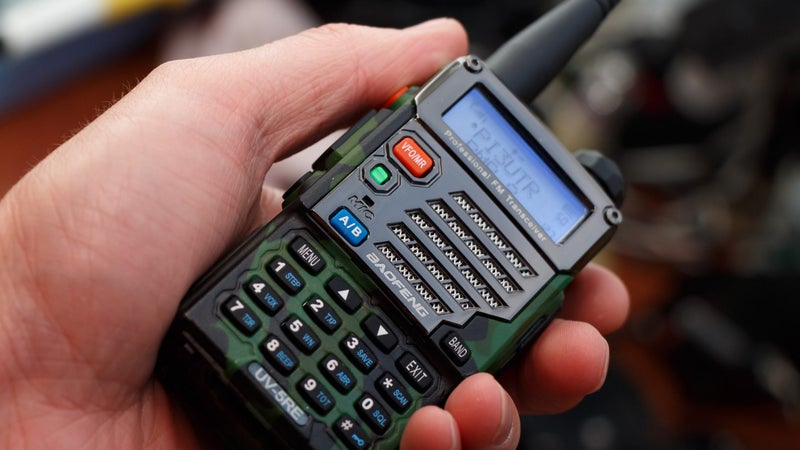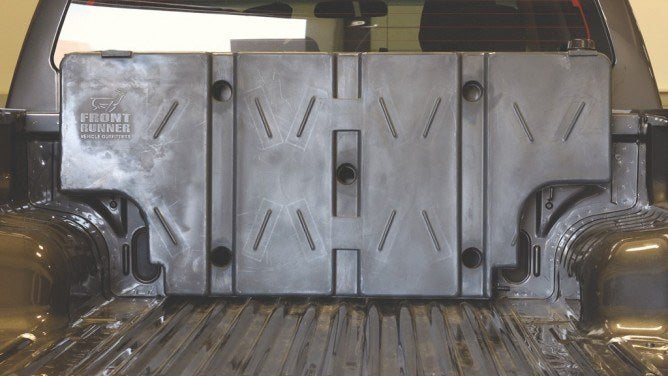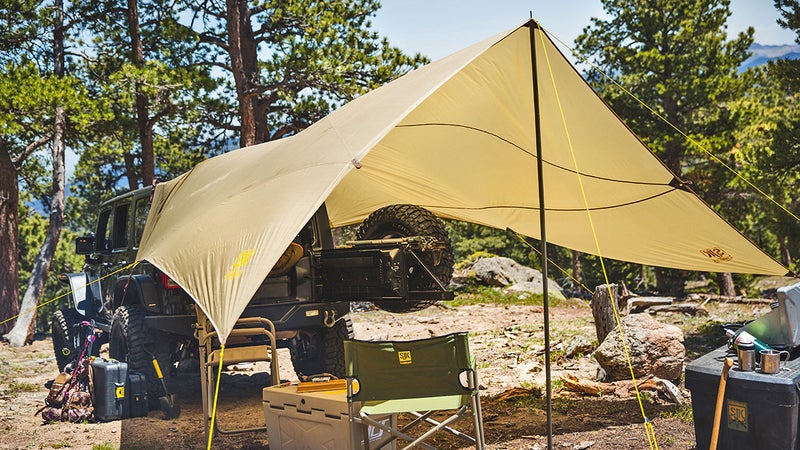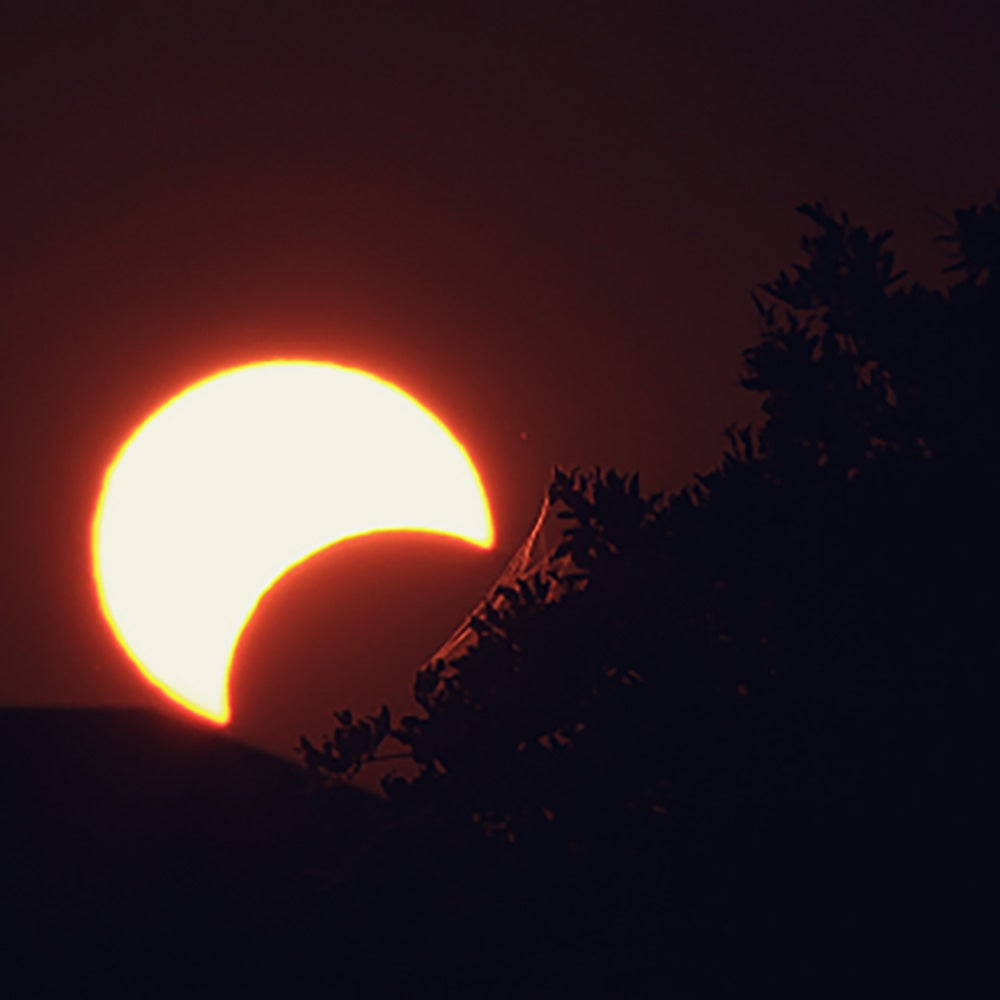On August 21, large numbers of people, many of them inexperienced campers, will be flooding rural areas in an attempt to view the remarkable coast-to-coast solar eclipse. Do you want to see it too? The best way might be to find remote, off-road areas along the path of totality. Here’s the gear that will help you get there and stay comfortable and safe over the long, hot weekend.
Plan Your Trip
NASA has put together of the path of totality in Google Maps. Start there, then try to find areas near you on public land and as far away from population centers as possible.
Once you have a rough area that you want to hit, analyze it for trails, water sources, and terrain features using tools like Google Earth. That should help you home in on a final campsite. If you need further help, check out Caltopo. Follow our instructions to build an offline map to get you to your site. Do not plan on having phone reception.
The woods will be crowded next weekend. Just in case there’s already someone (or many people) at your chosen campsite, make a nearby plan B.
Communicate with Friends

Not only is cell service in rural areas patchy, but large numbers of visitors could also overwhelm cellular networks. So it’s a good idea to carefully plan your trip with friends in advance.
Start with details like who’s driving from where, what route they plan to take (paying particular attention to any off-road areas), and their expected time and date of arrival. Trail systems can get confusing quickly, so make sure everyone is armed with the same maps and knows how to use them.
Portable radios are a good idea, especially if people are planning to arrive at a remote off-road destination at different times and days. They’ll enable you to call for help or just check in on progress within a local area. have a much further range than simple walkie talkies, but require you to before using them. Decide on a group frequency ahead of time.
And remember: The best way to get found if you get lost is to tell someone ahead of time where you’re going and when you’ll be back. That applies to trips outside camp as well as to the entire weekend. Clearly communicating who’s going to be where and when is the best way to keep everyone safe.
Prepare for the Conditions

The roads will be crowded, and the weather will be hot. Make sure your vehicle’s cooling system, air conditioning, and consumables (tires, brake pads, fluids) are in top-notch shape before departing, and take care not to run too low on fuel. Rural gas stations may struggle to meet demand, particularly during peak travel times. You can also expect AAA and other roadside repair services to be similarly overburdened.
Taking the opportunity to fill up when you reach half a tank as you move into the area of the eclipse is a good idea. Carrying some extra fuel will also help. Note that fuel cans should only ever be carried externally. make that easy, even on the most rudimentary of roof racks, and enable very secure carrying for bouncy off-roading. If you’re going off-road, calculate your total mileage, halve your usual fuel economy, and take more fuel than you plan on using.
Water, too, will be of utmost importance. If you’ve never visited your intended area before, don’t plan on finding water sources there in summer. Bring at least one gallon of water for each person, per day, just for drinking. And don’t forget water for your dogs, cooking, and cleaning.
Carrying that much water in a vehicle can get tricky. Our favorite solution is this clever upright water tank from . It allows you to locate its full-up weight of 108 pounds as close to your vehicle’s center of gravity as possible and fits in the back of a truck bed or behind the seats of an SUV.
Camp Comfortably

Because it’ll be hot, and because you’ll likely camp somewhere without much tree cover so you can see the main event, you’ll want to take along some extra shade. combines the convenience of a vehicle-mounted awning (it attaches to any vehicle via wheel clips) with the light weight, portability, and low cost of a tarp.
Want to shower? The allows you to pressurize seven gallons of water up to 65 PSI using a bike pump or compressor and mounts to a roof rack, so the water source is over your head. The black aluminum tube absorbs sunlight to warm the water. A more portable alternative is the .
You’ll also want a nice place to sleep. This maximizes convenience by housing all its components (including your sleeping bag, pillows, and other necessities) inside a hard fiberglass shell that helps it stand up to nighttime wind. Once you get to camp, you just pop the four latches, and hydraulic struts do the rest of the setup for you. Packing it down takes 90 seconds.
You’ll also want music. Have everyone create an offline playlist and take turns DJing. Check out our comparison of ruggedized Bluetooth speakers to find the one that’s right for you.
Enjoy the Eclipse
The Solar Eclipse Timer app (, ) works offline and finds your phone’s precise location to provide an audible narration of the eclipse’s phases, down to the tenth of a second.
You’ll also need viewing glasses so you don’t go blind. It’s not too late to order these affordable from Amazon.
Charge Up
Cameras, phones, speakers, maybe even an onboard refrigerator—keeping batteries topped up is a reality of modern camping.
The easiest and cheapest way to do that is with a portable battery pack. This holds 20,000 mAh of juice and costs just $42.
Want to plug stuff into your car? The first thing you’ll need is an AC inverter. This one and provides two 110-volt and two USB outlets. Not bad for $19.
Want to keep your car battery topped up without idling your engine? Tech innovations and high demand have finally brought portable solar panels within the range of mere mortals. Overland Solar’s 120-watt is ideal for car campers. It provides enough power to charge your vehicle’s battery or keep it powered up while running accessories like that onboard fridge.
At the very minimum, everyone should carry a portable jump-starter. Thanks to high-capacity, high-discharge lithium-ion batteries, the need to connect to another vehicle with jumper cables is a thing of the past. Just hook up , start your car, and away you go.
Stay Safe
With the eclipse occurring during August, when kids are out of school and many people are already planning camping trips and vacations, the eclipse’s timing is poor. It’s also the height of wildfire season.
“,” a Deschutes National Forest officer told the Statesman Journal. Oregon, the first state that will see the eclipse, is already beset by several wildfires.
The expected influx of vast numbers of visitors is expected to overtax law enforcement and first responder capabilities of parks and rural areas. People inexperienced in the outdoors will be exposed to hot weather and potentially dangerous terrain. Poor safety practices from anyone could spark another wildfire at a time when firefighters are least able to fight it.
Wherever you’re going, first check local fire restrictions. Plan to take a shovel and a water bucket, and keep both by the fire at all times. Clear brush and grass away from your fire ring to at least ten feet of clearance, monitor your fire at all times, and make sure it’s dead out before leaving the site or going to bed by dousing it in water and stirring the fire with your shovel until it’s cool to the touch. Don’t discard cigarette butts on the ground, and don’t idle cars off-road.
With crowded roads and an unusual number of visitors, prepare for long travel times to hospitals and emergency rooms and potentially long wait times once you’re there. Carry , and know how to use it. Be especially careful to pack any necessary medications, especially those needed to deal with allergies.
Once you reach the area of eclipse totality, be prepared to be stuck there for some time.



